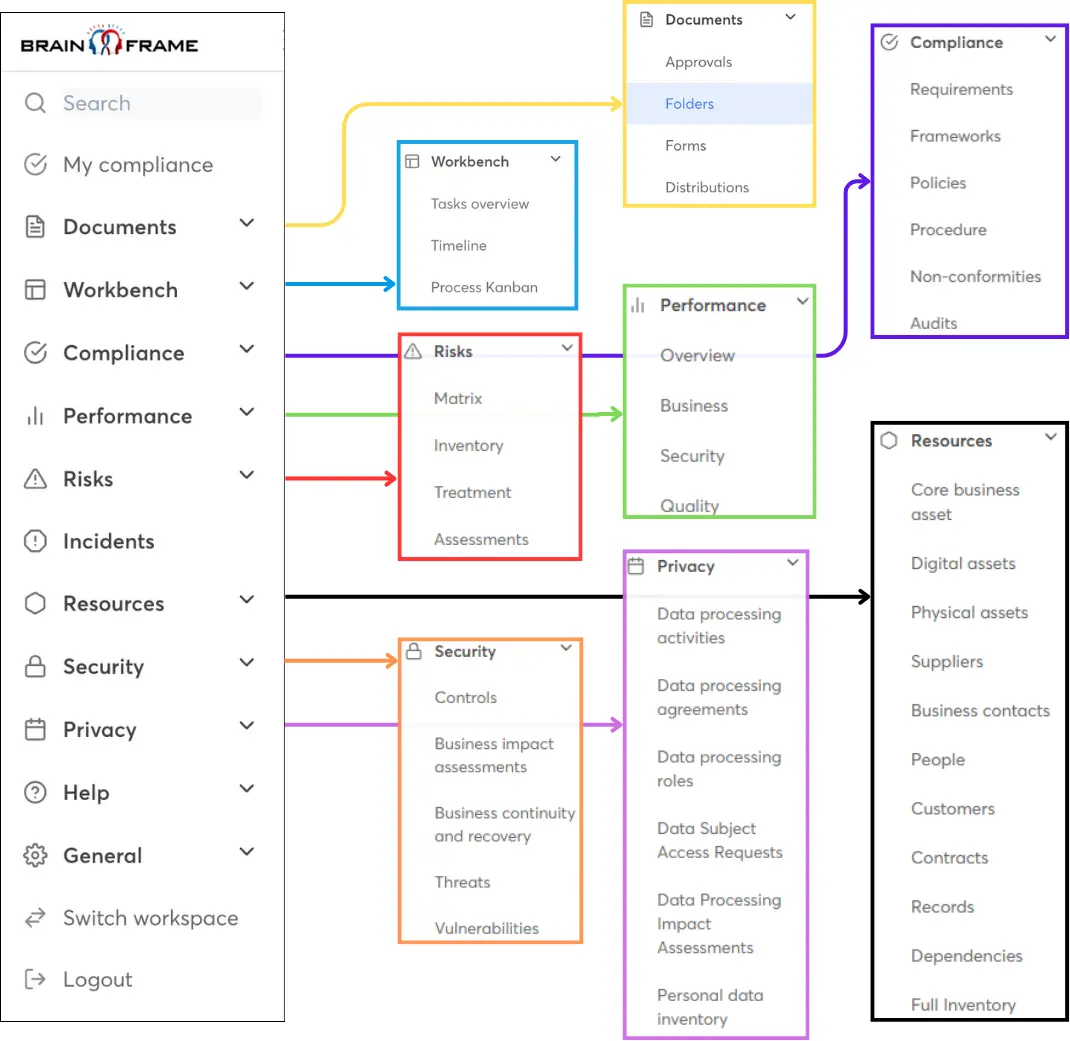Previously
In our previous article on Risk Assessment, we explored the importance of identifying and analyzing risks to safeguard your organization and comply with ISO 27001 standards. Now, we advance to the critical phase of Risk Treatment, where we implement strategies to manage identified risks effectively.
What is Risk Treatment?
Risk Treatment is the process of selecting and implementing measures to address the risks identified during the risk assessment phase. The goal is to reduce risks to an acceptable level, ensuring that your Information Security Management System (ISMS) aligns with organizational objectives and meets ISO 27001 requirements. This phase involves choosing appropriate risk responses and ensuring that residual risks are within acceptable levels.
Step 1: Defining your Risk Appetite
Risk appetite is the level of risk your organization is willing to accept in pursuit of its objectives.
Defining your risk appetite is a crucial step in the risk management process, providing a foundation for making informed decisions during risk assessment and treatment. It ensures that your Information Security Management System (ISMS) aligns with your organization's goals and that the controls you implement are appropriate to the level of risk deemed acceptable. A clearly defined risk appetite guides your organization in prioritizing risks, selecting suitable controls, and managing residual risks effectively. This clarity not only supports compliance with standards like ISO 27001 but also facilitates better communication with stakeholders about the organization's approach to risk management.
How to define Risk Appetite:
- Understand Organizational Objectives: Begin by reviewing the organization's strategic goals and objectives. Understanding these will help determine how much risk is acceptable to achieve these goals.
- Determine Risk Tolerance Levels: Define the maximum acceptable levels of risk for different risk categories (e.g., operational, financial, reputational). This includes setting thresholds for both the likelihood and impact of risks.
- Align Risk Appetite with Resources: Ensure that the defined risk appetite aligns with the organization's resources, including budget, personnel, and technology. The organization should have adequate resources to manage risks within the defined appetite.
Key Considerations:
- Define organizational risk limits by determining the level of risk your organization is willing to accept to achieve its goals.
- Guide risk management decisions by establishing clear risk appetite statements that align with organizational objectives and priorities.
- Ensure alignment and adaptability by regularly reviewing and adjusting the risk appetite to reflect changes in the risk landscape and organizational strategy.
Step 2: Plan and Implement Risk Treatment Controls
The next step in risk treatment involves planning and implementing controls to mitigate identified risks. This includes selecting the most suitable risk response strategies such as mitigation, transfer, avoidance, or acceptance.
Types of Risk Treatment Actions:
- Mitigation: Implement security controls to reduce the impact or likelihood of risks. This might include deploying firewalls, encryption, and access controls to protect sensitive data.
- Avoidance: Change processes to eliminate risk exposure entirely. For example, discontinuing the use of vulnerable technologies or practices that pose significant risks.
- Transfer: Shift risk responsibility to third parties through contracts or insurance, particularly for risks associated with third-party vendors and suppliers.
- Acceptance: Decide to accept the risk if the cost of mitigation exceeds the potential impact. This is typically applied to low-impact risks where the cost of control implementation outweighs the benefits.
Implementing Controls:
- Control Selection: Choose controls that effectively address specific risks, guided by the controls outlined in ISO 27001 Annex A.
- Action Plan Development: Develop a detailed action plan with steps, timelines, and responsibilities for implementing each control. Include milestones to track progress and ensure accountability.
- Integration with Business Processes: Ensure that controls are integrated seamlessly into existing business processes to enhance security without disrupting operations.
Key Considerations:
- Select controls based on risk priorities and business objectives.
- Assign clear responsibilities and timelines for implementing controls.
- Ensure ongoing measurement and monitoring of control effectiveness.
Step 3: Calculate and Manage Residual Risk
Once controls are implemented, it's essential to calculate residual risk—the risk that remains after controls are applied. This step ensures that all significant risks are managed within acceptable levels and is a requirement for ISO 27001 certification.
Residual Risk Calculation:
- Evaluate Control Effectiveness: Measure how well controls reduce the likelihood and impact of risks. Use metrics and key performance indicators (KPIs) to quantify effectiveness.
- Estimate Residual Risk: Reassess the risk level post-control implementation and compare it to your organization’s risk appetite.
- Document and Report: Clearly document residual risks, providing justification for their acceptance or further treatment. Share this documentation with stakeholders.
Key Considerations:
- Assess whether implemented controls sufficiently mitigate risks.
- Determine if additional measures are needed to manage residual risks.
- Ensure residual risks align with the organization's risk tolerance.
Step 4: Monitor and Review Risk Treatment
Continuous monitoring and review of risk treatment efforts are crucial to ensure ongoing effectiveness and compliance. Regularly evaluate control performance and adjust strategies as necessary to respond to new threats and changes in the business environment.
Monitoring Activities:
- Performance Metrics: Use KPIs to measure control effectiveness and identify areas for improvement.
- Regular Audits: Conduct periodic audits to evaluate the implementation and performance of risk treatment measures.
- Feedback Mechanisms: Establish channels for receiving feedback from stakeholders to identify potential issues and areas for enhancement.
Key Considerations:
- Implement regular monitoring to ensure control effectiveness over time.
- Adapt risk strategies based on emerging threats and changing business environments.
- Conduct audits and reviews to maintain compliance and improve security posture.
Engaging Stakeholders Through Tabletop Exercises
A practical approach to refining risk treatment strategies is to conduct tabletop exercises with key stakeholders from various departments. These exercises involve simulating incidents and evaluating the effectiveness of implemented controls in a controlled environment. By bringing together diverse perspectives from HR, IT, operations, and security teams, organizations can test their response plans, identify weaknesses in controls, and enhance their overall risk management capabilities. This collaborative method not only improves preparedness but also fosters a culture of continuous improvement in risk management practices.
How Brainframe Enhances Risk Assessment and Treatment
Brainframe offers powerful tools to streamline risk assessment and treatment, helping organizations efficiently achieve ISO 27001 certification.
Brainframe Features:
- Automated Risk Assessment: Leverage AI and machine learning to quickly identify and assess risks, offering insights into potential threats.
- Centralized Risk Register: Maintain an up-to-date risk register for comprehensive documentation and analysis.
- Control Management: Manage and track control implementation with an intuitive interface, ensuring timely completion of risk treatment plans.
- Residual Risk Calculation: Use analytical tools to accurately calculate residual risks, aligning them with organizational risk appetites.
- Real-time Monitoring: Access real-time monitoring and alerting capabilities to continuously track control effectiveness and respond to emerging threats.
Benefits of Using Brainframe:
- Increased Efficiency: Automate and streamline risk processes, saving time and resources.
- Enhanced Accuracy: Ensure thorough and accurate risk evaluations using advanced analytics.
- Improved Compliance: Align practices with ISO 27001 standards, facilitating certification.
- Proactive Risk Management: Gain real-time insights to stay ahead of potential risks.
Conclusion
Risk Treatment is a critical component of a robust ISMS, involving the careful selection and implementation of controls to effectively manage risks. By calculating and managing residual risks, organizations ensure compliance with ISO 27001 requirements and maintain a strong security posture. Tools like Brainframe can enhance these processes, making risk management more efficient and effective.
Next Steps: Exploring the Statement of Applicability
With a comprehensive risk treatment plan in place, our next focus will be on the Statement of Applicability (SOA). This phase involves selecting and justifying the controls needed to address identified risks, ensuring that the ISMS is tailored to your organization's specific needs. Stay tuned as we delve into the SOA, exploring how it links risk management with the practical application of security controls to strengthen your overall security posture.
Resources

Start for free now!
Streamline your GRC work using our all-in-one management solution and get access to our network of local specialists
